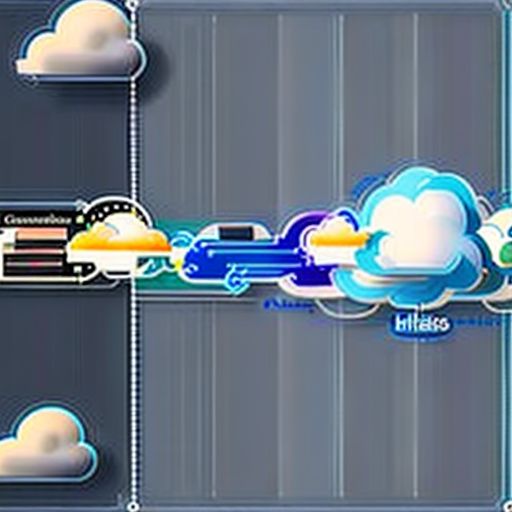In today’s digital age, businesses face a critical decision when it comes to managing their data and applications: cloud computing or on-premise infrastructure. Both options have pros and cons, and understanding their differences is crucial for making an informed choice. This article provides a comprehensive “cloud vs. on-premise comparison chart” to help you navigate this complex landscape and find the best fit for your specific needs.
Understanding the Basics
What is Cloud Computing?
Cloud computing relies on a network of remote servers (the “cloud”) to store, manage, and process data, rather than relying solely on a local server or personal computer. Think of it like renting a powerful IT infrastructure instead of owning and maintaining it yourself.
What is On-Premise Infrastructure?
On-premise infrastructure refers to the traditional model where businesses own and manage their entire IT infrastructure locally, within their own physical premises. This includes all hardware, software, and data stored on servers and devices physically located within the organization’s building(s).
Cloud vs. On-Premise: A Head-to-Head Comparison
To help illustrate the key differences, let’s dive into a detailed comparison chart:
| Feature | Cloud Computing | On-Premise |
|---|---|---|
| Cost | Typically subscription-based (pay-as-you-go) | High upfront capital expenditure for hardware and software |
| Scalability | Highly scalable; easily adjust resources up or down based on demand | Scaling requires significant hardware investments and can be time-consuming |
| Maintenance | Cloud provider handles all maintenance and updates | Responsibility of the business to maintain and upgrade hardware and software |
| Security | Cloud providers offer robust security measures, but data breaches are still possible | Businesses have direct control over security, but maintaining it requires expertise and resources |
| Accessibility | Access data and applications from anywhere with an internet connection | Access typically limited to within the organization’s network |
| Control | Less direct control over infrastructure and data | Full control over all aspects of the IT infrastructure |
| Deployment | Quick and easy deployment | Time-consuming setup and installation process |
Key Considerations When Choosing Between Cloud and On-Premise
1. Budget and Cost Structure
- Cloud: Predictable, subscription-based pricing makes budgeting straightforward. However, long-term costs can become high.
- On-Premise: High upfront costs, but potentially more cost-effective over the long term for organizations with consistent, predictable IT needs.
2. Security Requirements
- Cloud: Reputable cloud providers offer advanced security features, but data breaches are still a concern.
- On-Premise: Provides direct control over security, but maintaining a high level of protection requires significant expertise and resources.
3. Future Growth and Scalability
- Cloud: Effortlessly scale resources up or down based on business needs, enabling agility and flexibility.
- On-Premise: Scaling requires significant planning, time, and financial investment in new hardware and infrastructure.
Conclusion
Choosing between cloud and on-premise infrastructure is a crucial decision for any business. By carefully considering your budget, security requirements, scalability needs, and other factors outlined in the comparison chart, you can determine the best fit for your organization. There is no one-size-fits-all answer, so carefully weigh your options and choose the solution that aligns best with your unique business goals.
We’d love to hear from you! Share your thoughts, questions, or experiences with cloud and on-premise infrastructure in the comments below. Let’s keep the conversation going!


